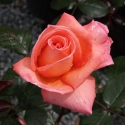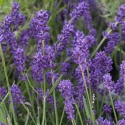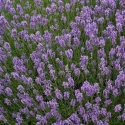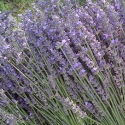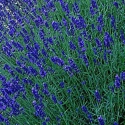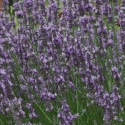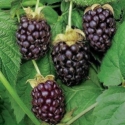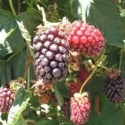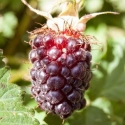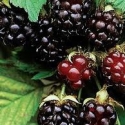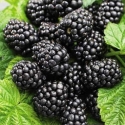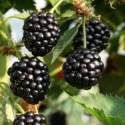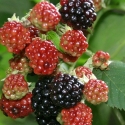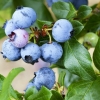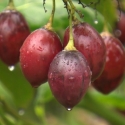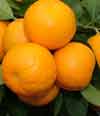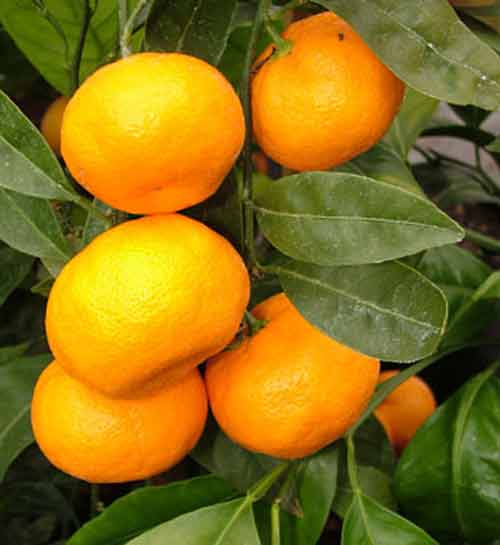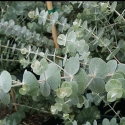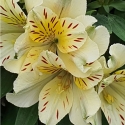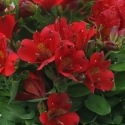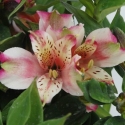Saturday 27th November, 2021
Hi
The best thing about gardening is there is always a project
It seems to happen so quickly that we go from neat and manicured in the garden to having that overgrown and woolly look, just like our unmanaged lock down locks. That being said it's almost time to get in and sort the garden so that it looks amazing for when the rellies all come to visit at Christmas. I am already looking at all the hedges in our own gardens, not to mention the nursery and I can see that it's time to get cracking with those motorized hedge trimmers. I have already had them serviced and sharpened and so they are at the ready, perhaps starting next week.
I usually suggest to most that they wait for the spring growth to harden off somewhat (change from the spring shades of green to their summer colour) and then get cracking. If its hedges that you're trimming, cut them back as close as you can to the previous years efforts without going so hard that you're cutting into old wood - unless you are wanting to actually reduce the height. As I say to my team the balance in between the two is important, as every centimetre increase in height over the two trims per year means that your hedge gains an inch in height, which after a few years that does become significant.
Trees after they have had their spring flush tend to drop and their branches come closer to the ground with the extra weight of the new growth. I like to keep the layers visible in my garden and so I go around and remove or lift some of the smaller branches so that they bounce back up to where they should be. Look carefully before you remove each branch as you don't want to leave holes by taking too big a branch as often enough just cutting some of the fluffy stuff off will do the trick. Note here to self to sort the service right of way as the Tilias or Limes trees have dropped quite a lot and those huge trucks that use this drive are currently being draped on by our trees.
The roses also seemed to have peaked with their first flush of the year and we are busy dead heading here, though we are still leaving as many flowers on as we can so that those who are looking can see the colours and shades. For the completely finished blooms, I remove them nearly right back to where they grew from, albeit leaving 3 or 4 buds or a piece about 5 cm long. 3 or 4 buds will provide 3 or 4 new stems of flowers in roughly 7 weeks time. In the home garden if you roses have finished then removal of the flower stems leaving those few buds above where they are attached to the bush frame work will provide a full flush in 7 weeks too. Remember its like growing veges with compost, rose fertiliser and water are also need to help your roses reach potential for the second time around, especially with the summer heat.
The same goes for daisies, spanish lavender and many perennials as they tend to put on this amazing display and whilst they still have flowers to show, an overall haircut will bring the full flush back on it in around about 6 to 7 weeks.
English Lavenders enjoy our hot and dry summers
Speaking on Lavender it's that time of year that my favourite style of lavender tends to be in stock - and that is those of the English persuasion usually known as Lavender Spica, Angustifolia or Intermedia species. English Lavender has the tall stems with very fragrant flowers borne at the top. This kind of lavender is the one that you would choose for dried flowers, Pot pouri lavender sachets and even cooking like a fragrance/flavour for cakes and sugar.
All lavenders are quite particular in where they like to grow and being native of the Mediterranean they like full sun and well drained soils. So this time of year in the Waikato and around most parts of the country is a good time to establish these in the garden. I also feel that in the right position these English lavenders have quite a long life span as I remember getting almost 20 years out of some in the office gardens. To help extend the life of your plants you'll want to trim all the flowers off once they are finished, cutting it back into some of the fresh green foliage. Lavenders don't usually like being cut back into old wood or those brown structural branches and the other secret is not to leave the trimming too late, such as late march or April as they don't get enough time to regenerate prior to winter
English Lavenders do come as smaller, medium and larger growing forms
Foveaux Storm is one of the smaller growing forms and in a darker form of purple as its name suggests. The bush itself will end up some 30 to 40 cm high and wide and the flowers will be approx a further 30 to 40 cm high.
Munstead is another dwarf, compact form with foliage and flowers that carry the true sweet lavender fragrance we all love. The fine, grey foliage is topped off with stalks of little lavender flower heads in the peak of summer.
Lavender Arabian Night Bright violet blue flowers on long "pickable" stems and an intense perfume make this Lavender one to add to your collection. Easy to grow in a warm well drained position and a mid sized bush in the garden
Lavender Hidcote Blue Named after one of England's finest gardens this lovely little English Lavender has intensely aromatic foliage and flowers. The deep purple flowers appear on fine stems in summer.
Lavender Pacific blue English Lavender. This selected form of the ever popular and very fragrant English Lavender will delight the senses with stems of intense blue-mauve flowers in the summer months. Aromatic fine grey foliage
Lavender Super This is a stunning 'English' hybrid lavender which is both tall and sturdy. With large aromatic grey foliage and long stems of intensely aromatic purple flower heads it is a very desirable plant. and one of the larger forms and around 60 to 80 cm and then the flowers stems
Christmas is berry time, Maybe its time to make a berry house
Raspberries are pretty easy to grow and they are coming up right now to start fruiting and boy do we have quite a selection to choose from. Now the thing to know about raspberries is that some varieties main crop fruit just for the spring and others cultivars will have a second smaller crop going into the autumn.
Heritage is one of those that have fruit a second time around.
Nootka Skeena and
Willamette are three cultivars that are grown locally and will crop well as we approach Christmas. Just to add some more interest we even have a white form,
Ivory if you are looking for something different to add to those summer berry dishes
Boysenberries are what you call Floricanes and fruit on 2nd year canes and so you need to prune accordingly. Pick from
Brulee with white flowers in early Spring followed by large firm conical dark purple black berries. Crops December to January.
Mapua a
great Boysenberry to grow as it has less thorns than other varieties and has berries with an outstanding flavour.
Tasman A self fertile Boysenberry with medium to large delicious berries from December. This is an almost thornless berry bush that crops well reliably
Blackberries fruit on 2nd year wood. It is usual to cut back the cane that has finished fruiting and then train a 1 year old new cane in preparation for fruiting the following season.
Black Satin is a highly rated American cultivar with sturdy thorn-less 'canes'. The large luscious berries ripen early in the season around about January.
Navaho is another thornless Blackberry. Upright habit, no thorns and bumper crops of firm sweet fruit in summer - what more could you want? Someone to make the jam I suppose!
Blackberry Thornless are a thornless variety that performs best when planted in groups to maximise flowering and fruiting. The spring flowers are followed by large red berries that turn black when ripe towards the end of summer.
There are more small fruits that could be planted right now including
Blueberries which are starting to crop. Choose either Rabbit eye or southern high bush for our warmer climate. You'll want to get different cultivars of the same type to help with good pollination and as an idea you can plant a row of them as an informal hedge in the potager garden
Tamarillos,
Tangelos and
Mandarins of the satsuma kind (easy peel and pip less) are some more small fruits ready to be planted, along with too many more to mention them all.
Plants for the Christmas season or a decorative reason
If you are out and about looking for a live Christmas tree and one that you can pot up and use from year to year then these are in stock to check out. Conifers make for great pot and tub plants as they love full sun and are hardy and somewhat tolerant of being drier conditions - lol remember that doesn't mean bone dry. These have been trimmed to help them be bushy and enhance that classic shape and you could continue to do this otherwise plant out in the garden after Christmas and let them grow into the stately tree that they are. Our best specimens currently in stock include
Cedrus Deodara,
Picea Albies,
Picea Sitchensis and
Pinus Patuala.

One for those keen on some floral work and always popular is
Eucalyptus Baby Blue. We don't usually have these spare but find that there are a few there available so be in quick! This one grows into a small form of the silver dollar gum with its attractive small blue leaves which are so desired by the florists. Rather that let it become a small trees keep in trimmed so that it produce stems of blue leaves to harvest.
Colour your garden with Alstroemerias of the smaller stem kind, these almost grow like a mass flowered groundcover as the years go past and they do make a great show. There are quite a few to choose from so check these out.
There is still plenty of colour out in the roses and so they are worth coming out to have a look see if you like to see the shades in person. There is going to be a shortage of standard roses next year and so if you are thinking of these then we do still have quite a range left in stock at the moment.
Housekeeping stuff
If you are wanting plants couriered then best to get onto it as we will cease from the 15th of December as we need to get these where they are going in good time. I can only imagine on the year that we have had that the courier will get more congested as we move into December. We won't start start dispatch again until the first full week in Jan.
We will be closed Christmas day as usual but will be open the usual 8.30 am to 5pm every day right through the holiday period. We still have to water and maintain the plants but will be with a skeleton team on and the garden will also be open if you have visiting friends and family.
What do you do with chicken breast that you defrosted to cook for the dog and they already have enough food open... You slice them open and add spinach, Haloumi cheese, slices of tomato and lots of chopped French tarragon or what ever herbs you like, salt and pepper and then wrap in bacon and roast in the oven until cooked. So simple and yummo! The second night I make a tarragon tomato sauce and add the breast sliced then reheat and serve with rice and asparagus. There's still some left and so it's time to have mum over for dinner tonight as well to help finish it all off.
I feel that it's soon to be a count down for Christmas and so there will be plenty of things happening, gardens to get sorted, reunions with our loved ones in Auckland from the 15th of December - so its going to be a busy time and then rest. I'm sure that you are all busy out there and hopefully looking forwards to the holiday season.
Have a great weekend
Cheers Lloyd, Tony and the Wairere team




